Guide to Ebike helmets: Ultimate Protection & Style for Cyclists
Bike helmets are a crucial accessory for cyclists, as they prevent head injuries in case of falls or collisions. These helmets are frequently used by professional athletes, tourists and extreme cycling enthusiasts ebikes buy. Often, parents also buy bicycle helmets for their children to prevent serious injuries..
Why its necessary to have a high quality bike helmet
Now, I'll share some not-so-cheerful statistics. According to research, in Canada, about 75 people die annually from injuries caused by bicycle accidents, and 5,000 are treated in emergency departments. There, bicycles are very popular, here, they are mostly used by people aged 25 to 44, primarily for leisure activities. In Canada, the lack of proper bike lanes is one of the reasons for the 5% increase in bicycle-related fatalities in the first six months of 2022 (116 people died, and 1,842 were injured).
However, the same Canadian researchers claim that bike helmets reduce the risk of traumatic brain injuries by 50-60% and facial injuries by 20-25%. This is due to the bike helmet's design:
Outer Shell:
Made of polystyrene with a plastic coating. This coating determines the bike helmet's appearance (color, shape, number of ventilation holes) and helps distribute the impact force;
Base:
Made of polyurethane or polystyrene. These are elastic materials that compress upon impact, protecting the head from injuries. According to the Bike Helmet Safety Institute, the base is disposable; if you hit the ground with the helmet, it should not be used again;
Lining:
Provides a comfortable fit on the head and absorbs sweat, easily detachable for washing;
Straps:
Secure the bike helmet on the head. Helmets are also made from carbon and fiberglass, providing reliable protection even during very strong impacts.
Types of Bike Helmets
Cross-Country:
Protects the top of the head, intended for city walks. It is lightweight (100-150 g) and has good ventilation;
Road:
Used by athletes, with more ventilation holes (at least five), improved aerodynamic properties, and lightweight (150-200 g);
Bowl:
Designed for tricks, so it has enhanced protection and completely covers the head. This model lacks ventilation;
Full-Face:
Covers the head and lower part of the face. Made for extreme off-road riding and motocross;
Track:
Suitable for athletes participating in track races. Its design lacks ventilation holes, and the shape is streamlined;
Aerodynamic:
Also created for ring speed races on the track. It has a teardrop shape and a heavy weight (from 300 g);
Mountain:
The main difference in this model is a robust fixation system and a reinforced outer layer (with the addition of carbon or nylon fibers). Men's and women's helmets can differ in design and color, but most often, manufacturers offer unisex bike helmets; only the size needs to be chosen. Helmets for children are usually universal and feature bright designs.
Top-3 adult bike helmets ranking
ALPINA Delft Mips
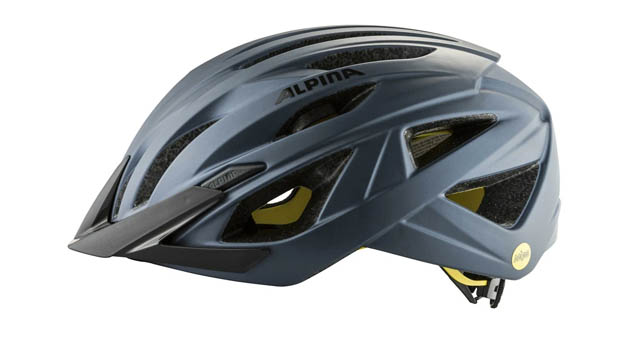
Description: This model is designed for cycle touring and incorporates MIPS technology, providing additional protection to the head in case of a side impact. The helmet is suitable for adults of any gender with a head circumference of 51-56 centimeters. It is equipped with 20 ventilation holes, enhancing comfort during movement, even in hot weather, and has a removable visor to protect against splashes, dirt, and sunlight.
Construction: The outer shell is made of polycarbonate, containing ultraviolet stabilizers and antistatic properties. The inner shell absorbs the impact force and provides protective cushioning of the helmet's walls, complemented by an antibacterial lining that prevents the development of bacteria and odors.
Safety Features: A scratch-resistant layer at the bottom of the shell significantly increases safety in case of a side impact. At the back, there is a curved retaining bracket with a mechanism for adjusting the width. The helmet is fastened with a buckle on the securing strap, featuring a red button and an automatic locking clasp.
Material: Polycarbonate
Size: 51-56 cm
Number of Ventilation Holes: 20
Safety Feature: MIPS technology
Weight: 300 g
Pros and Cons: Features MIPS technology, an outer layer made of polycarbonate, and a buckle with a red button and an automatic locking clasp. Mainly suitable for cycle touring.
Limar 778
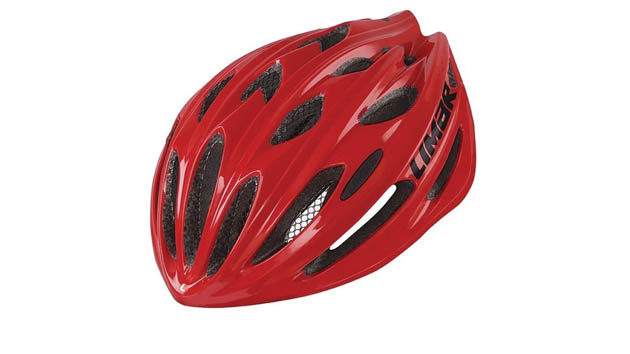
Description: A classic road model manufactured using in-mold technology, which involves surface covering of plastic products with a special film. Ventilation is provided by 24 holes. The helmet is suitable for women with a head circumference of 57-62 centimeters.
Features: Inside the shell, there's an antibacterial, washable lining. Size adjustment is made through the Limar Ultralight and Competition+ systems, ensuring not only the adjustment of size but also the position of the fixation system, guaranteeing an excellent fit.
Safety and Comfort: A LED light (steady or flashing) at the back of the helmet provides maximum visibility of the cyclist both day and night. According to user reviews, the helmet is very lightweight (200 g), but it's not possible to remove the protective net, more padding would be desirable, and the fixing system could be improved.
Material: Plastic
Size: 57-62 cm
Number of Ventilation Holes: 24
Safety Feature: LED light on the back of the helmet
Weight: 200 g
Pros and Cons: 24 ventilation holes, lightweight (200 grams), LED light on the back. The protective net is non-removable, lacks sufficient padding, and the fixing system could be better.
Specialized Align II HYPRVIZ
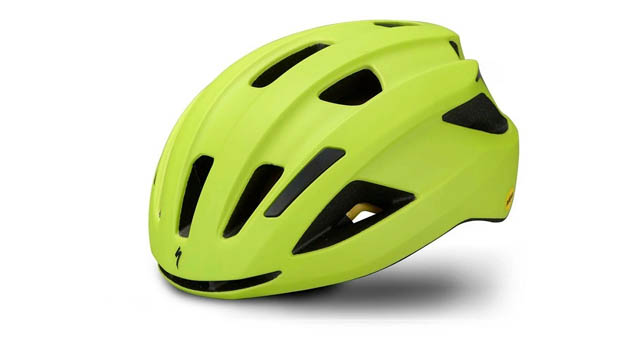
Description: A bicycle helmet that provides protection against impacts from different directions. This model is made using MIPS technology and is equipped with a Tri-Fix splitter and SX dial fit system for a comfortable fit. Optimal ventilation is achieved with the 4th Dimension Cooling System.
Intended for: Both men and women, with head circumferences of 54-56 cm and 56-58 cm, corresponding to sizes S and M. The helmet features reflective elements on the body, ensuring the cyclist's safety in the dark. User reviews note that the helmet is good, but it might feel heavy compared to other models without the MIPS system.
Material: Expanded Polystyrene (EPS)
Size: 54-56 cm, 56-58 cm
Safety: Reflective elements, MIPS system
Weight: 350 g
Pros and Cons: Features MIPS technology that protects against impacts from different directions, includes reflective elements. Some may find it heavy compared to regular helmets (without MIPS).
Top-3 Best Affordable Bike Helmets
Segway NB-400

Description: A helmet suitable for cycling, rollerblading, scootering, and skateboarding. Fits men and women with a head circumference of 58-63 centimeters. The outer layer is made of monolithic polycarbonate using pressure molding, and the inner layer is made of expanded polystyrene. These materials help distribute the impact load in case of an accident.
Design: The helmet has a pot-like shape and is equipped with SWAC technology, which captures incoming air through special channels and circulates it throughout the interior of the helmet. User reviews indicate that the helmet is good but is narrow around the temples, causing pressure.
Material: Polycarbonate, Expanded Polystyrene
Size: 58-63 cm
Ventilation: SWAC technology
Weight: 330 g
Pros and Cons: Protects the entire head and is equipped with technology that circulates air across the inner surface of the helmet, lightweight. Narrow around the temples, causing pressure, thin soft inserts.
XTREME
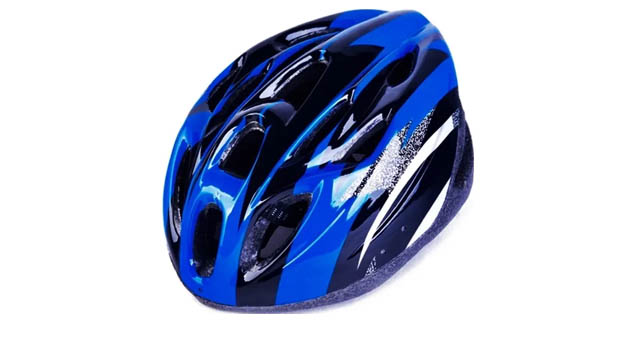
Description: A cycling helmet designed for use while biking, rollerblading, scootering, and skateboarding. This accessory has a universal size and is suitable for children aged seven and older as well as adults. The inside of the helmet is lined with foam to prevent concussions in case of collisions.
User Reviews: Users report that the helmet is excellent with no complaints. However, the manufacturer does not specify the material of the outer layer and the number of ventilation holes, so additional information should be sought from the manager.
Size: Universal
Weight (with packaging): 300 g
Pros and Cons: Universal fit, internal foam for protection. The manufacturer does not specify the material of the outer layer and the number of ventilation holes.
Kellys DYNAMIC

Description: A men's cycling helmet with a head circumference of 50-65 centimeters. The body of the helmet is aerodynamic; the outer layer is made of durable plastic, and the inner layer is made of soft foamed material. There are 12 front and eight rear ventilation holes (the latter are covered with mosquito netting) for maximum thermoregulation.
Design: The back of the helmet includes a mechanism for adjusting the size. The sun visor is easily removable and can be attached as needed. There are no negative reviews of this model online.
Material: Plastic, Expanded Polystyrene
Size: 50-54 cm, 55-59 cm, 60-65 cm
Ventilation Holes: 12 front, 8 back
Pros and Cons: 20 ventilation holes, reflective elements. Designed only for men.
Top-3 Best Bike Helmets with Visor
West Biking

Description: This cycling helmet comes with three high-quality visors, ventilation holes, and a built-in rear light. It's designed to handle any distance, including challenging mountain tracks. The inner lining prevents direct contact between the head and the base of the helmet, ensuring constant air flow around the head for added comfort while riding.
Adjustability: Features a special mechanism for size adjustment, fitting men and women with a head circumference of 58-62 cm. The number of ventilation holes is not specified by the seller and should be clarified when ordering.
Material: Foam
Size: 58-62 cm
Safety: Rear light
Pros and Cons: Three visors, no direct head contact with the helmet's base; the number of ventilation holes is not specified.
Head RACHEL
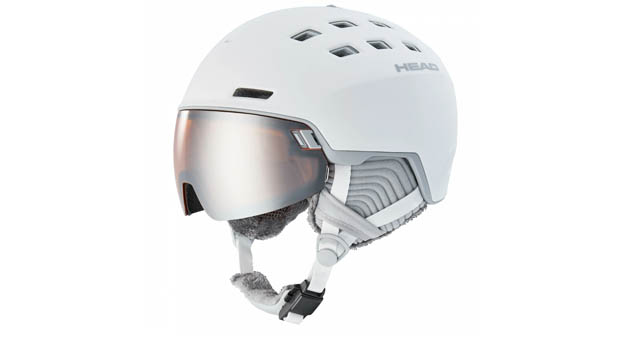
Description: A stylish women's helmet in size XS/S, designed for challenging mountain conditions. The visor can be quickly changed if needed. It includes ventilation holes and a patented Sphere Fit size adjustment, automatically centering the helmet on the crown of the head for an ideal fit and comfort. Suitable for use in both summer and winter (with top ventilation holes closed in winter).
Special Features: Ventilation holes, Sphere Fit size adjustment
Size: XS/S
Gender: Female
Pros and Cons: Unique size adjustment, suitable for both summer and winter use; designed exclusively for women.
Cairbull

Description: A protective cycling helmet with a visor suitable for both men and women for warm-weather use. It's lightweight (230 g) and features a built-in rear light and 22 ventilation holes. The model is designed for individuals with a head circumference of 54 to 61 cm. It comes with removable magnetic glasses and a sun visor. For added safety, reflective elements are applied to the helmet.
Special Features: Ventilation holes, size adjustment
Size: 54-61 cm
Safety: Rear light, reflective elements
Weight: 230 g
Pros and Cons: Unisex, lightweight; suitable only for summer use.
Top-3 Best Full-Face Bike Helmets
JETCAT NoLimits
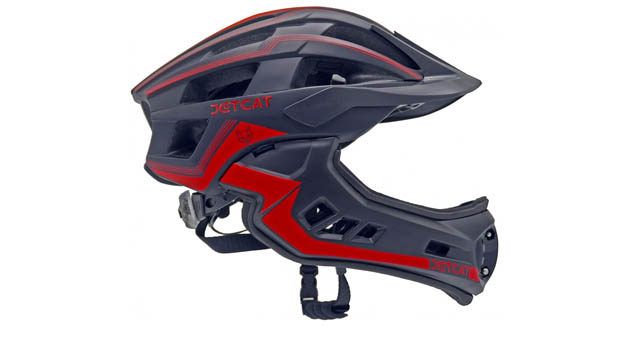
Description: Suitable for cycling, rollerblading, skateboarding, scootering, etc. This model features a removable chin guard and a rear light, providing reliable protection for head sizes from 48 to 53 cm. It has ventilation holes and can be used by both men and women. Made from foam and plastic, it has a noted weakness in the chin guard attachment, as reported by customers.
Material: Foam, plastic
Special Features: Ventilation holes, size adjustment
Size: 48-53 cm
Safety: Rear LED light
Pros and Cons: Includes a rear light, unisex; weak chin guard attachment.
BATFOX Full Face Helmet
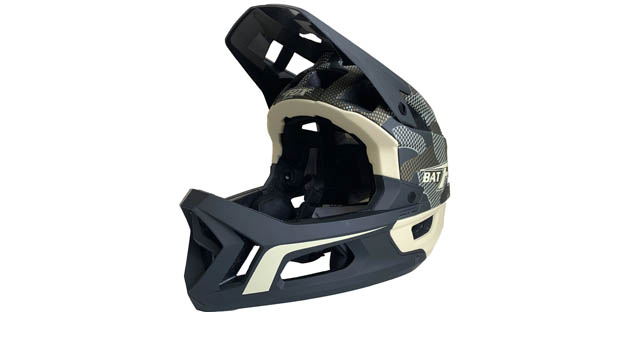
Description: Suitable for summer use, this helmet fits head sizes of 60-61 cm. It offers injury protection with its reinforced polystyrene protective element. It features a removable, antibacterial-treated Clean Tech lining and a chin pad for increased comfort. Additional benefits include ventilation holes, a cover, and a stylish design. Some customers find the straps uncomfortable.
Material: Polystyrene
Special Features: Ventilation holes, cover
Size: 60-61 cm
Pros and Cons: Reinforced protective element, removable antibacterial lining; uncomfortable straps.
JETCAT Raptor SE

Description: This helmet with a removable chin guard is suitable for head sizes from 48 to 53 cm. It includes ventilation holes and a rear light for visibility in dark conditions. Ideal for cyclists, scooter riders, rollerbladers, and skateboarders. The protective element is made of foam and plastic. Some users find it difficult to put on due to the chin guard.
Material: Foam, plastic
Special Features: Ventilation holes, size adjustment
Size: 48-53 cm
Safety: Rear LED light
Pros and Cons: Size adjustability, robust construction; difficult to wear because of the chin guard.
Top-3 Best Professional Cycling Helmets
West Biking
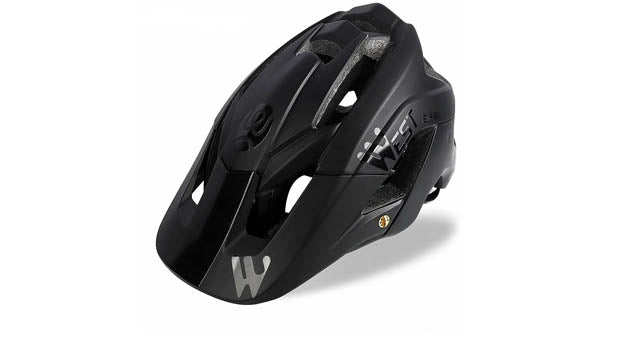
Description: This professional cycling helmet with a bright design is specially made for men. It offers high protection thanks to its plastic and foam construction, fully covering the skull and occiput. The optimal number and geometry of ventilation holes contribute to comfort and coolness while riding. Designed for men with a head circumference of 58 to 62 cm, it's suitable for long distances and has a moisture-wicking lining.
Material: Foam, plastic
Special Features: Ventilation holes, size adjustment
Size: 58-62 cm
Pros and Cons: Bright design, high level of protection; limited to male users.
MET Trenta 3K

Description: This cycling helmet, with an ergonomic design for professional use, fits well thanks to its 360° buckle system. Special ventilation holes provide excellent air circulation. Thin layers of carbon and foam offer reliable injury protection. Lightweight at 229 grams, it fits head sizes 58-59 cm. A drawback is the lack of reflective elements.
Material: Foam, carbon
Special Features: Ventilation holes, 360° buckle system
Size: 58-59 cm
Weight: 229 g
Pros and Cons: Excellent fit, lightweight; lacks reflective elements.
Scott Cadence Plus
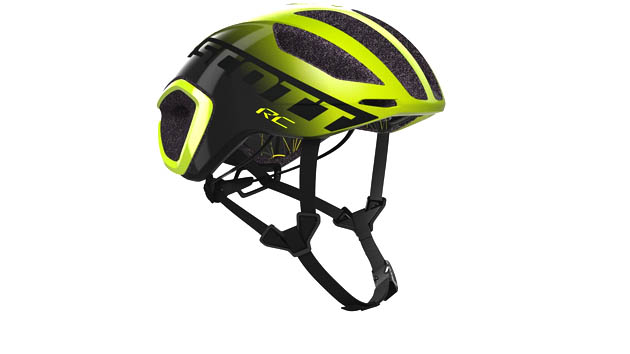
Description: Designed for professional cyclists, this helmet features front aerodynamic channels, an air catcher, and rear ventilation holes. It has a MIPS protection against lateral gliding impacts, Halo 360 fit system, and antibacterial lining. The helmet’s fit can be adjusted on the go. Made from polystyrene with reflective elements for nighttime safety, it's suitable for a head circumference of 51-55 cm. Some users note that the tight strap fit around the jaw can cause skin irritation.
Material: Polystyrene, MIPS
Special Features: Ventilation holes, Halo 360 size adjustment
Size: 51-55 cm
Safety: Reflective elements
Pros and Cons: Excellent ventilation, antibacterial lining; tight straps may cause jaw irritation.
Top 3 children's bicycle helmets:
Indigo IN072
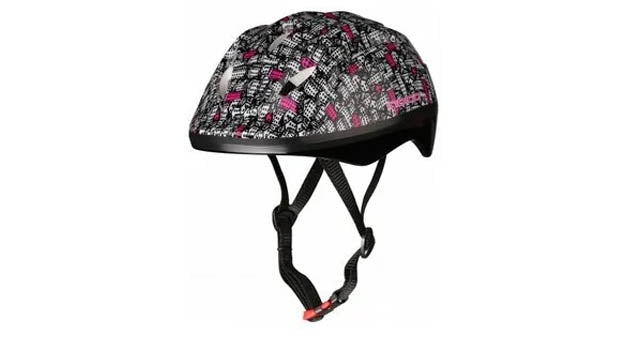
Description: A helmet for urban cycling, balance biking, and rollerblading. Suitable for children with head sizes of 48-56 centimeters. The accessory is designed in a cross-country style and features ten large ventilation holes, a visor, and enhanced back-of-the-head protection. The inner surface consists of resilient foam and additional soft pads. The size of the model is adjustable with a special ring, secured under the chin with straps. The model is made of plastic and has a bright design.
User Reviews: High-quality workmanship, however, users report difficulties with strap adjustment (a one-time but lengthy process) and thin top plastic.
Material: Plastic
Size: 48-56 cm
Ventilation Holes: 10
Safety: Bright design
Weight: 380 g
Pros: Large ventilation holes, visor, enhanced back protection
Cons: Complicated strap adjustment, thin top plastic
HUDORA Skaterhelm
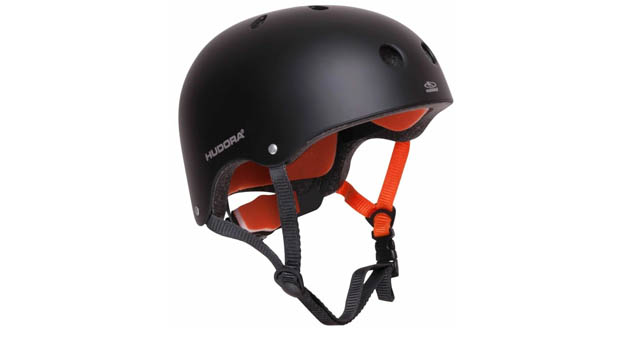
Description: A durable helmet for children aged six and above, suitable for cycling, skateboarding, rollerblading, and performing tricks. The model has a pot-like shape with reinforced back and ear cutouts for reliable impact protection. The size is adjustable within 51-55 centimeters. The outer shell is made of ABS plastic and a layer of dense foam, while the inner part is made of removable soft foam with velcro. There are 11 ventilation holes, with the front ones protected by a mesh, and the helmet includes reflective stickers on the back for safety.
User Reviews: Sturdy, lightweight (400g), and spacious, but lacks a visor, and the ventilation holes are not very large, which can be hot in summer.
Material: ABS plastic
Size: 51-55 cm
Ventilation Holes: 11
Safety: Reflective inserts
Weight: 400 g
Pros: Reflective inserts, sturdy plastic, soft foam inside with velcro
Cons: No visor, smaller ventilation holes can be hot in summer
Bobike ONE Plus
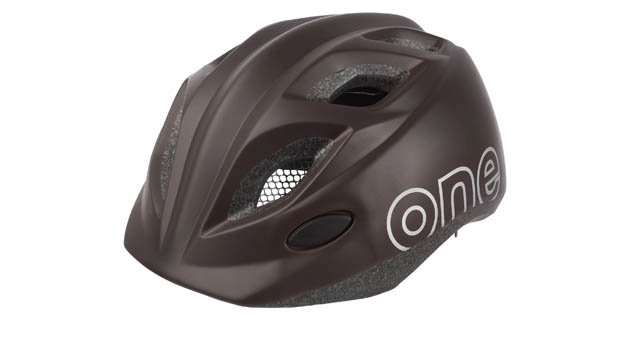
Description: A helmet for children from one to ten years old, available in two sizes: XS (for head circumference 48-53 centimeters) and S (52-56 cm). Easily adjustable straps make it usable for multiple seasons and over a hat. The accessory is made of plastic in a pot-like shape with reinforced back protection, ten ventilation holes (front ones covered with mosquito netting), and reflective stickers at the back.
User Reviews: Lightweight (200g), but the straps are a bit long, causing the helmet to slide back while riding.
Material: Plastic
Size: 48-53 cm, 52-56 cm
Ventilation Holes: 10
Safety: Reflective stickers
Weight: 200 g
Pros: Two sizes for children aged one to ten, reflective stickers, very lightweight at 200 grams
Cons: Straps are a bit long, causing the helmet to slide back while riding.
How to choose e-bike helmet:
Size
A correctly sized helmet guarantees comfort and safety, so it should be tried on when purchasing. Models with an adjustable size are tailored individually.
Fit
When wearing the helmet and fastening the straps, pay attention to your feelings: the helmet should not sit too loosely or, conversely, too tightly and press on your head, and the straps should not cut into your skin. When moving your head, a slight deviation of the model to the sides is permissible, but not sliding forward or backward. With the correct fit, the helmet occupies a horizontal position, covering both the forehead and the back of the head.
Fixation
The best option is when the clasp passes through the top surface of the shell and attaches to it (this is more reliable). Straps fixed on the side surfaces do not guarantee good fixation, and the helmet may come off during a fall. The fastener should be able to be unfastened with one hand.
Ventilation
Remember that the more holes in the helmet, the better. Models equipped with a special air circulation system can also be chosen.
Weight
Heavy models (from 300 g) put a lot of pressure on the neck, so lighter ones are preferable, although they are more expensive.
Safety
It’s great when children's helmets have reflective stickers, and adult ones have a small light. There may also be additional soft inserts on the inside of the helmet.
Quality
It is necessary to check the condition of the inner layer and the outer shell. They should not have any cracks, dents, or other defects.
How to repair Bike Helmet
Repairing bike helmets is generally not recommended. Helmets are designed to protect your head by absorbing the impact during a crash, which often involves the helmet sacrificing its integrity to disperse the energy away from your skull. Once a helmet has been compromised, either through visible damage or an impact, its ability to protect is significantly reduced, and it should be replaced rather than repaired.
Why You Shouldn't Repair a Bike Helmet
- Safety Integrity: The materials used in helmets, like EPS (expanded polystyrene) foam, are designed for one-time impact absorption. After an impact, the foam compresses and loses its protective capabilities. This damage might not always be visible.
- Hidden Damage: Cracks, dents, or compromised structural integrity may not be visible on the helmet's surface but can significantly reduce its effectiveness.
- Manufacturer's Warranty: Many manufacturers advise against repairing helmets because unauthorized repairs can further compromise the helmet's safety. Some offer a replacement program for helmets that have been damaged.
What You Can Do Instead of Repairing
- Inspect Regularly: Regular inspection can help you identify when it's time to replace your helmet. Look for cracks, dents, or any signs of wear in the foam or outer shell.
- Clean Carefully: You can clean your helmet with mild soap and water to maintain its appearance and hygiene. Avoid using harsh chemicals or solvents that can degrade the helmet materials.
- Replace Parts When Possible: Some helmet components, like the fit system, straps, or padding, can be replaced if they wear out or get damaged. Check with the manufacturer for replacement parts.
- Replace After Impact: Always replace your helmet after a significant impact or crash, even if it looks okay. The internal damages are not repairable and will not provide the necessary protection in future impacts.
- Follow the Manufacturer's Guidelines: Consult your helmet's manual for care instructions and adhere to the manufacturer's replacement advice, typically every 3 to 5 years, depending on use and exposure to elements.
Where to buy right helmet
Purchasing the right helmet involves finding a reputable retailer that offers a wide selection of helmets certified for safety. Here are several avenues where you can find a suitable helmet:
- Pros: Personalized fitting, the ability to try before you buy, expert advice, and immediate availability.
- Cons: May have higher prices compared to online deals; selection limited to what's in stock.
2. Sporting Goods Stores
- Pros: Wide variety of brands and models; knowledgeable staff.
- Cons: The focus might not exclusively be on cycling, so the range or expertise could be less than in a specialized bike shop.
3. Online Retailers
- Pros: Broad selection, competitive pricing, customer reviews for insight.
- Cons: Cannot try before buying, must rely on accurate head measurements, returns can be cumbersome if the fit isn't right.
4. Direct From Manufacturers
- Pros: Access to the latest models, potential for discounts on previous year's models.
- Cons: Limited to one brand, cannot compare different brands easily.
5. Second-hand Markets
- Warning: Generally not recommended due to safety concerns. It's hard to verify the helmet's history, including impacts that may compromise its safety.
Additional Questions about Helmets
What can and can't you save on when buying a bicycle helmet?
When buying a helmet, it’s better not to skimp and choose worthy European brands that have passed the necessary checks and certifications. The quality of plastic (on cheap helmets, the plastic is such that after a blow, it has to be dug out from under the skin) and foam matters. In cheap models, the foam is just too hard. There's no big difference between hitting your head on the ground or on the helmet.
What materials should a quality bicycle helmet be made of?
The helmet should be made of quality materials: durable plastic, supplemented inside with foam, and equipped with a protection system, for example, MIPS.
What are the main protective elements a bicycle helmet should contain?
A frame made of quality foam, an impact-softening system (ideally MIPS), and durable plastic that bends upon impact rather than shattering into hundreds of fragments.
When is it time to replace a bicycle helmet with a new one?
After the first impact. Even if the helmet has not cracked, it can lose its structural strength. Without damage - as long as you like it, keep riding.
Additional accessories to helmets
In addition to a helmet, there are several accessories you might consider to enhance safety, comfort, and convenience on your bike rides. Here’s a list of recommended accessories:
1. Lights
- Front Lights: Essential for seeing the road and being visible to others when riding in low light or at night.
- Rear Lights: Increases visibility from the back, especially important in foggy or rainy conditions and during nighttime.
2. Chain Lock
- A sturdy bike lock (or two) is crucial for securing your bike against theft. U-locks, chain locks, and folding locks are popular choices with varying levels of security.
3. High-Visibility Clothing or Accessories
- Reflective vests, jackets, or stickers can greatly enhance your visibility to motorists, especially in poor light conditions.
4. Puncture Repair Kit and Spare Tube
- Being prepared for a flat tire is essential. A basic repair kit should include tire levers, a spare tube, patches, and a mini pump or CO2 inflator.
5. Multi-Tool
- For adjustments and repairs on the go, a cycling-specific multi-tool can be a lifesaver.
6. Water Bottle and Cage
- Staying hydrated is important, especially on longer rides. A water bottle cage mounted to your bike frame allows easy access to your drink.
7. Cycling Gloves
- They provide comfort by reducing vibration and improve grip. Padded gloves can also protect your hands in case of a fall.
8. Bike Bell or Horn
- Essential for signaling your presence to pedestrians and other cyclists, especially on shared paths.
9. Fenders
- If you're riding in wet conditions, fenders can help keep you and your bike clean by blocking splashed water and mud.
10. Bike Computer or Smartphone Mount
- For tracking your distance, speed, and route, a bike computer or a smartphone mount can be very useful.
11. Saddle Bag
- A small bag attached under your seat can carry essentials like your repair kit, spare tube, and personal items.
12. E-bike Mirrors
- Handlebar or helmet-mounted mirrors help you keep an eye on traffic behind you without turning your head.
13. Kickstand
- If your bike doesn't come with one, a kickstand is useful for parking your bike anywhere without having to find something to lean it against.
When choosing accessories, consider your specific needs based on the type of riding you do, the conditions you ride in, and personal preferences for comfort and convenience. Prioritize accessories that enhance safety and ensure that you're prepared for common issues like flat tires.
Conclusion
Quality helmets are like bicycle brakes - they're a matter of life and death. It's essential to purchase the highest quality helmet and have full confidence in its reliability. E-bikes can accelerate up to 40 mph, which is quite a serious speed where one needs to be cautious and protected. This was just the first part of our helmet selection. I hope you liked it. Stay tuned for more. And if you already have questions, come visit us at 654 College Street, Toronto (Movin Ebikes). We'll show you the difference in helmet quality and help you choose the best one for your goals and needs.



